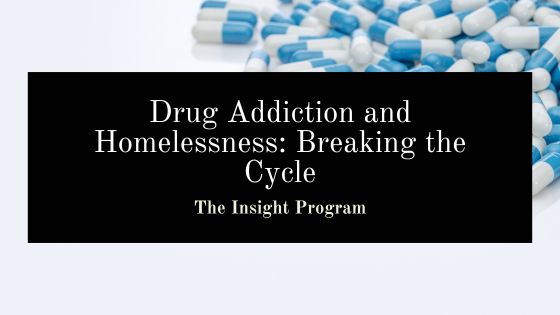Drug addiction and homelessness often coexist in a destructive cycle that can be difficult to break. Addiction can lead to homelessness, and homelessness can exacerbate substance abuse, creating a downward spiral that leaves individuals trapped in both conditions. Understanding this cycle, addressing its root causes, and implementing comprehensive solutions are critical to breaking it.
The Connection Between Drug Addiction and Homelessness
The relationship between drug addiction and homelessness is complex and intertwined. Addiction is both a cause and a consequence of homelessness. For many, drug use begins as a coping mechanism for stress, trauma, or economic hardship. Over time, as addiction deepens, it may lead to job loss, strained relationships, and the inability to maintain stable housing. When a person becomes homeless, the challenges of life on the streets, such as physical danger, hunger, and isolation, often drive them further into substance abuse as a way to escape their harsh reality.
A study by the National Coalition for the Homeless found that approximately 38% of homeless people are dependent on alcohol, and 26% are dependent on other drugs. Addiction not only makes it harder for individuals to secure housing and employment, but it also exacerbates health problems, which can further complicate their ability to regain stability.
How Homelessness Fuels Addiction
Homelessness creates an environment in which addiction can thrive. People experiencing homelessness face constant stress and trauma, which can worsen mental health issues like depression, anxiety, and PTSD. Without access to adequate healthcare or mental health services, many turn to drugs or alcohol as a form of self-medication. The lack of a stable home also limits access to addiction treatment and recovery programs, making it harder for homeless individuals to get the help they need.
Furthermore, homelessness isolates people from family and social support systems, which are critical for recovery. The sense of abandonment and hopelessness can push people deeper into addiction. Living on the streets often means exposure to environments where drugs are readily available, increasing the temptation to use and the difficulty of maintaining sobriety.
Breaking the Cycle
Breaking the cycle of drug addiction and homelessness requires a multi-faceted approach that addresses the root causes of both conditions. Here are some essential strategies:
- Comprehensive Treatment Programs
One of the most effective ways to address both addiction and homelessness is through comprehensive treatment programs that offer integrated care. These programs should include detoxification, counseling, mental health support, and long-term rehabilitation. Importantly, treatment should be accessible to individuals regardless of their housing status, and tailored to meet the specific needs of homeless populations.
- Housing First Approach
The “Housing First” model has shown great promise in breaking the cycle of homelessness and addiction. This approach prioritizes providing stable housing to individuals first, without requiring them to be sober or complete treatment beforehand. The stability of a safe home allows people to focus on their recovery, access healthcare, and rebuild their lives. Studies have shown that people are more likely to maintain sobriety and improve their mental health when they have a stable living environment.
- Mental Health Support
Since many homeless individuals also struggle with mental health issues, it’s essential to provide integrated mental health and addiction treatment services. Addressing trauma, depression, and anxiety is a key part of addiction recovery. Programs that combine substance abuse counseling with mental health services can help individuals heal and rebuild their lives.
- Job Training and Employment Opportunities
Employment is often the key to breaking out of homelessness and addiction. Offering job training, education, and employment opportunities can give people the tools they need to become self-sufficient. By helping individuals gain employment, society can provide a pathway toward financial stability and independence, which reduces the risk of relapse.
- Supportive Community Networks
Building a strong support network is crucial for individuals recovering from addiction and homelessness. Programs that provide peer support groups, case managers, and ongoing counseling help people stay connected to resources and maintain their sobriety. Support from others who understand their experiences can make a significant difference in their recovery journey.
Conclusion
The connection between drug addiction and homelessness is a vicious cycle that feeds on itself, but with the right interventions, it can be broken. Comprehensive treatment programs, stable housing, mental health support, and employment opportunities are all key components of addressing the dual challenges of addiction and homelessness. By focusing on both the root causes and long-term solutions, we can give people the support they need to rebuild their lives and break free from the cycle of addiction and homelessness.

